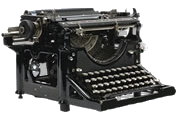War Profiteers (Life Magazine, 1919?)
Although the year 1919 (and spanning throughout much of the Twenties) was a period marked by a strong sense of anti-communism in the United States, the words war profiteer proved to be a term capable of getting a good many people in both camps riled up. This is a fine cartoon by Rollin Kirby that nicely satirizes that low breed of opportunist.
Click here to see how weird the first car radios looked.
War Profiteers (Life Magazine, 1919?) Read More »
